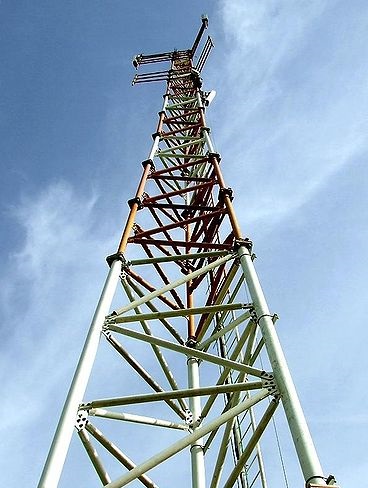Officials from the Telecom Regulatory Authority of India has released a statement with these findings.
Telecom Regulatory Authority of India (TRAI) officials recently spoke in Kolkata and indicated that the reason mobile services have been steadily deteriorating over the last while is that the country is not sufficiently supplies with mobile towers.
They explained that there are strict guidelines in the country with regards to EMF radiation from BTS.
TRAI advisor, Agneshwar Sen explained that in India, there are tight guidelines for the EMF radiations from the base transceiver stations (BTS) that are necessary for mobile services, when compared to those of other countries. This includes the benchmark standards that have been established by developed nations. He explained that, as a result, “Lack of adequate number of mobile towers is one of the reasons for deteriorating quality of mobile services.”
These regulations over towers for mobile services were implemented following concerns over public health.
 The TRAI principal advisor, Suresh Kumar Gupta, underscored that the government in India has worked very hard in partnership with the telecom department and with TRAI in order to be able to “implemented stringent emission norms that ensure no adverse effects on human health from mobile tower emissions.” When speaking at an interactive session about the impact of EMF radiation on human health, Gupta controversially explained that the mobile tower radiation is “nothing more than radio waves whose energy and frequency levels were far too low or weak in strength to present any risk or hazard to health.”
The TRAI principal advisor, Suresh Kumar Gupta, underscored that the government in India has worked very hard in partnership with the telecom department and with TRAI in order to be able to “implemented stringent emission norms that ensure no adverse effects on human health from mobile tower emissions.” When speaking at an interactive session about the impact of EMF radiation on human health, Gupta controversially explained that the mobile tower radiation is “nothing more than radio waves whose energy and frequency levels were far too low or weak in strength to present any risk or hazard to health.”
This placed Gupta under fire from a number of public health watchdog groups that argued that the statement was inadequately supported by scientific evidence and that there had even been research completed that suggested otherwise.
That said, Gupta’s claim did align with that of a broad range of respected international organizations, including the WHO, which have said that exposure to EMF radiation for mobile services is not connected with health effects on either children or adults. As of yet, the identification of too few towers is only the start of the process. A solution to the problem has not yet been chosen.
The explosive growth of telecom and weak infrastructure are posing a threat to Modi’s plan to connect rural and urban India.
Mobile technology has been taking off in India with a vengeance, but the dream that Prime Minister Narendra Modi has been aiming to realize – to bring steady connections to urban and rural regions of the country – could be threatened due to a number of common struggles.
Almost one billion people in India have connected to the country’s cell phone services over the last ten years.
This has been a part of the mobile technology revolution that has been occurring in the country. It has brought India to the point that they are the second largest market in the world for wireless phones. However, a recent combination of rapid growth and the poor wireless infrastructure has also meant that the hopes the country has had to expand its mobile network reach has become exceptionally difficult and frustrating to device users.
The current mobile technology situation in the country has earned it the nickname of the “call-drop nation”.
 The regularly dropped calls is currently affecting people in all social statuses and income levels. The help line run by the government in order to allow for consumers across the country to register complaints has now reported that dropped calls are among the leading grievances that have been registered over the summer. It has become national headline news and has even led to the creation of a popular social media hashtag campaign called #NoCallDrops.
The regularly dropped calls is currently affecting people in all social statuses and income levels. The help line run by the government in order to allow for consumers across the country to register complaints has now reported that dropped calls are among the leading grievances that have been registered over the summer. It has become national headline news and has even led to the creation of a popular social media hashtag campaign called #NoCallDrops.
Though this problem has been growing steadily worse as mobile connections have been getting worse, the issue has been catapulted into the spotlight over the last few weeks after dozens of cell towers in the country’s capital were deemed invalid by the municipal corporation. This brought the three largest mobile device makers in India before a parliamentary committee in the hopes of discovering a solution to this widespread issue. Modi has called to his officials to repair this problem.
According to mobile technology consultant Prasanto K Roy, “India’s mobile network is under tremendous stress,” adding that “if we fail to address mobile connectivity problems, it will directly hit the government’s Digital India initiative.”
 The TRAI principal advisor, Suresh Kumar Gupta, underscored that the government in India has worked very hard in partnership with the telecom department and with TRAI in order to be able to “implemented stringent emission norms that ensure no adverse effects on human health from mobile tower emissions.” When speaking at an interactive session about the impact of EMF radiation on human health, Gupta controversially explained that the mobile tower radiation is “nothing more than radio waves whose energy and frequency levels were far too low or weak in strength to present any risk or hazard to health.”
The TRAI principal advisor, Suresh Kumar Gupta, underscored that the government in India has worked very hard in partnership with the telecom department and with TRAI in order to be able to “implemented stringent emission norms that ensure no adverse effects on human health from mobile tower emissions.” When speaking at an interactive session about the impact of EMF radiation on human health, Gupta controversially explained that the mobile tower radiation is “nothing more than radio waves whose energy and frequency levels were far too low or weak in strength to present any risk or hazard to health.”
 The regularly dropped calls is currently affecting people in all social statuses and income levels. The help line run by the government in order to allow for consumers across the country to register complaints has now reported that dropped calls are among the leading grievances that have been registered over the summer. It has become national headline news and has even led to the creation of a popular
The regularly dropped calls is currently affecting people in all social statuses and income levels. The help line run by the government in order to allow for consumers across the country to register complaints has now reported that dropped calls are among the leading grievances that have been registered over the summer. It has become national headline news and has even led to the creation of a popular 